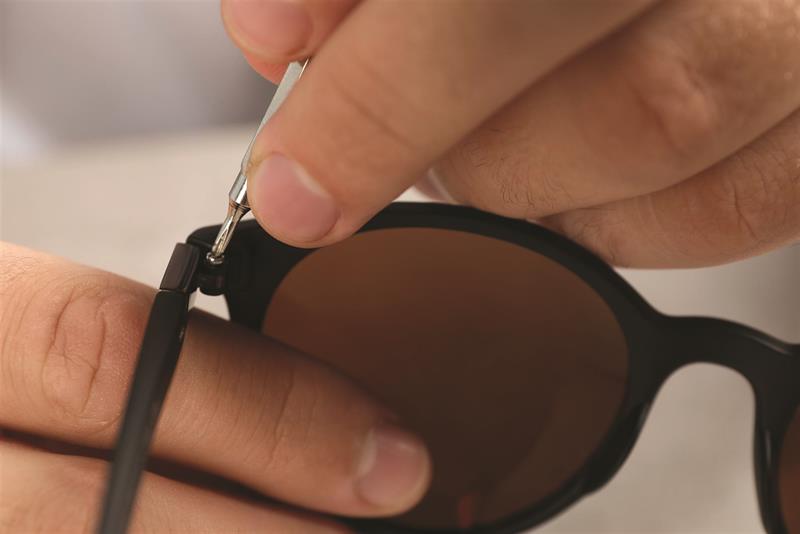
G: Goldsmith
Phillip Oliver Goldsmith started out in 1919 as a commercial salesman for Raphael’s, an optical firm in London. Inspired by the notion that frames could be more than medical devices, Goldsmith set about designing his own frames and launched his first range in 1926 from a mobile showroom. He initially worked with metal but introduced new materials to the eyewear market when he came across a button factory who were using a new raw material, coloured plastic.
After WWII, Goldsmith and his son, Charles, opened a small factory on Poland Street in London. In 1946, Charles designed frames fitted with coloured glass lenses and by the mid-50s sunglasses had a high-profile status. The Goldsmith brand had become synonymous with the booming film and fashion scenes by the ‘60s with Audrey Hepburn, Grace Kelly and John Lennon all wearing Goldsmith frames.
The Goldsmith name is now carried by Claire Goldsmith and Andrew (Oliver) Goldsmith, each of whom has developed their own take on the Goldsmith style. Oliver Goldsmith Spectacles has remained relatively faithful to the original blueprint, while Claire Goldsmith has created an ophthalmic collection with its own aesthetic and reinterpreted sunglass line that delves into the Goldsmith archives.
H: Hinge
Hinges on frames typically come in two variants but eyewear companies have also experimented with the component in attempts to create new innovations. Whether hidden or exposed for style purposes, a hinge ultimately functions for compact storage while not on the wearer’s face. A barrel hinge is the most common and oldest type of hinge found on glasses. The barrels fit into each other with a small screw holding them in place. Generally, more barrels mean more durability. A spring hinge affords more flexibility beyond the traditional 90-degree angle, often providing more comfort for the wearer. Hingeless frames will be sculpted to fit the wearer with rounded temples to imitate the shape of a skull, offering a sleek look.

I: Injection moulding
The process of injection moulding has been employed by eyewear manufacturers because of its mass production capabilities. It is a fast process of creating frames that is controlled by computers in order to produce large amounts of identical products, removing the variance and time-consuming process of hand-crafted frames. It works by inserting molten polymer at a high pressure into a mould, which defines the shape and is designed from computer-aided design drawings. Plastic pellets, which can be combined in different coloured grains, are melted, fused, injected then cooled to obtain semi-processed frames.



